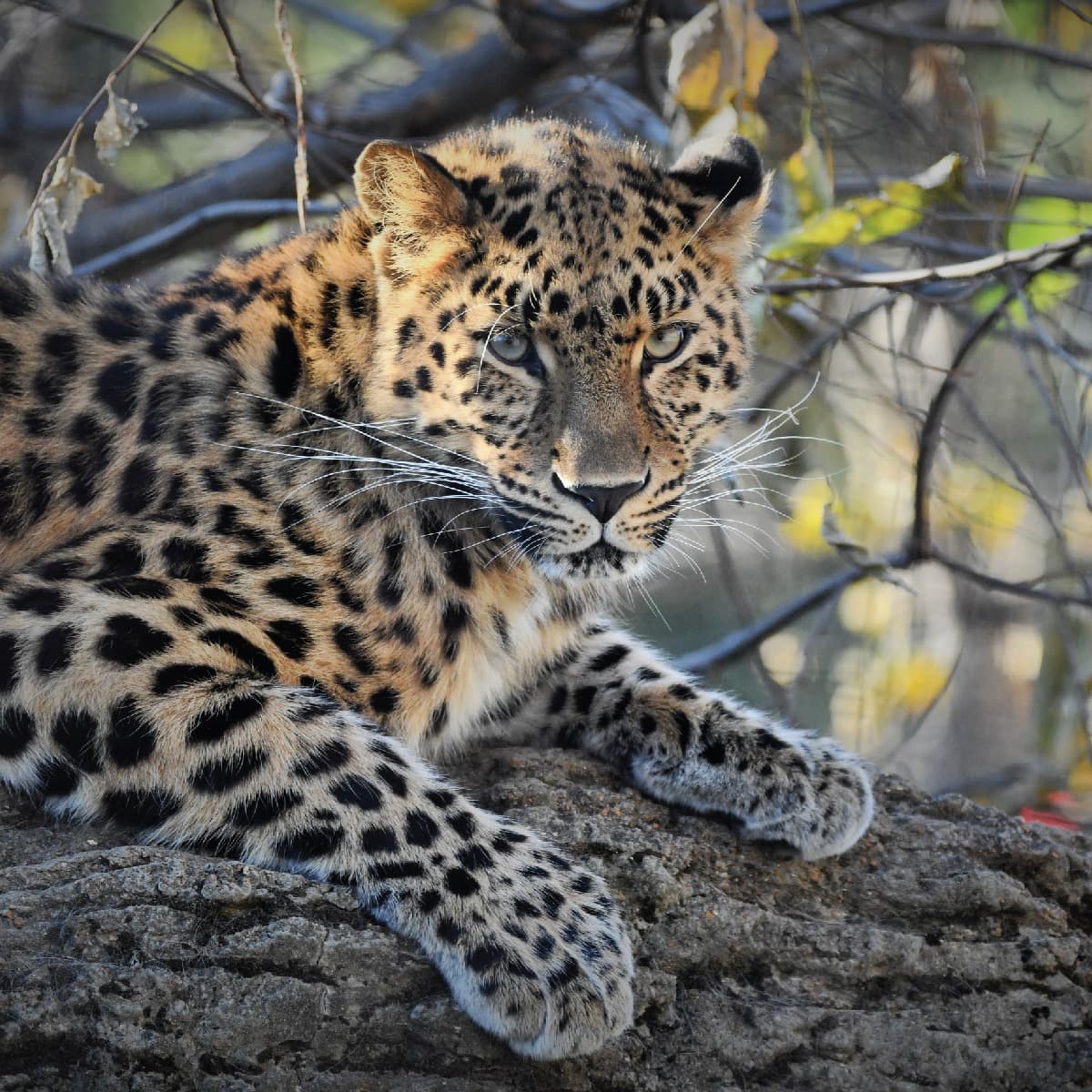
Amur leopard
Panthera pardus orientalis
Did you know?
- Just like a person’s fingerprints, every Amur leopard has a unique pattern of spots.
- Their tongues have tiny hooks, called denticles, which they use to shear meat off bones.
- Females have a gestation (pregnancy) of about 12 weeks, after which they give birth to an average of one to four cubs.
- They can reach speeds of 35 miles per hour.
- Amur leopards nocturnal, meaning they typically only come out at night.
Cold Weather Cat
Amur leopards are the most northern leopard species. Their thicker, longer fur allows them to stay warm in their forest habitat in eastern Russia. Their long tails help them balance when they climb trees.
My Food!
Amur leopards are excellent climbers and sometimes carry their prey into tall trees to keep their food safe from other animals.
Threat Level
- Unknown
- Common
- Near Threatened
- Threatened
- Endangered
- Critically Endangered
- Extinct in the Wild
Critically Endangered
The Amur Leopard is considered to be facing an extremely high risk of extinction in the wild.
Range
Southeastern Russia
Habitat
Mountain Forests

We care about Amur leopards
Amur leopards are the most endangered big cat. Through cooperative conservation efforts, their population has grown. The Saint Louis Zoo participates in the Amur Leopard Species Survival Plan, a cooperative breeding program that helps ensure a healthy population of animals. Learn more about how we are helping wildlife around the world.
Find this animal in Red Rocks

SAINT LOUIS ZOO ZONE
Red Rocks
At Red Rocks, you’ll view some of the world’s most powerful predators living near some of the world’s most graceful prey. Lions, tigers, zebra and giraffes all share the natural rocky boulders and outcroppings as their territory. With shading trees and a bird or two among the mammals, Red Rocks is a great place to spend a day at the Saint Louis Zoo.

